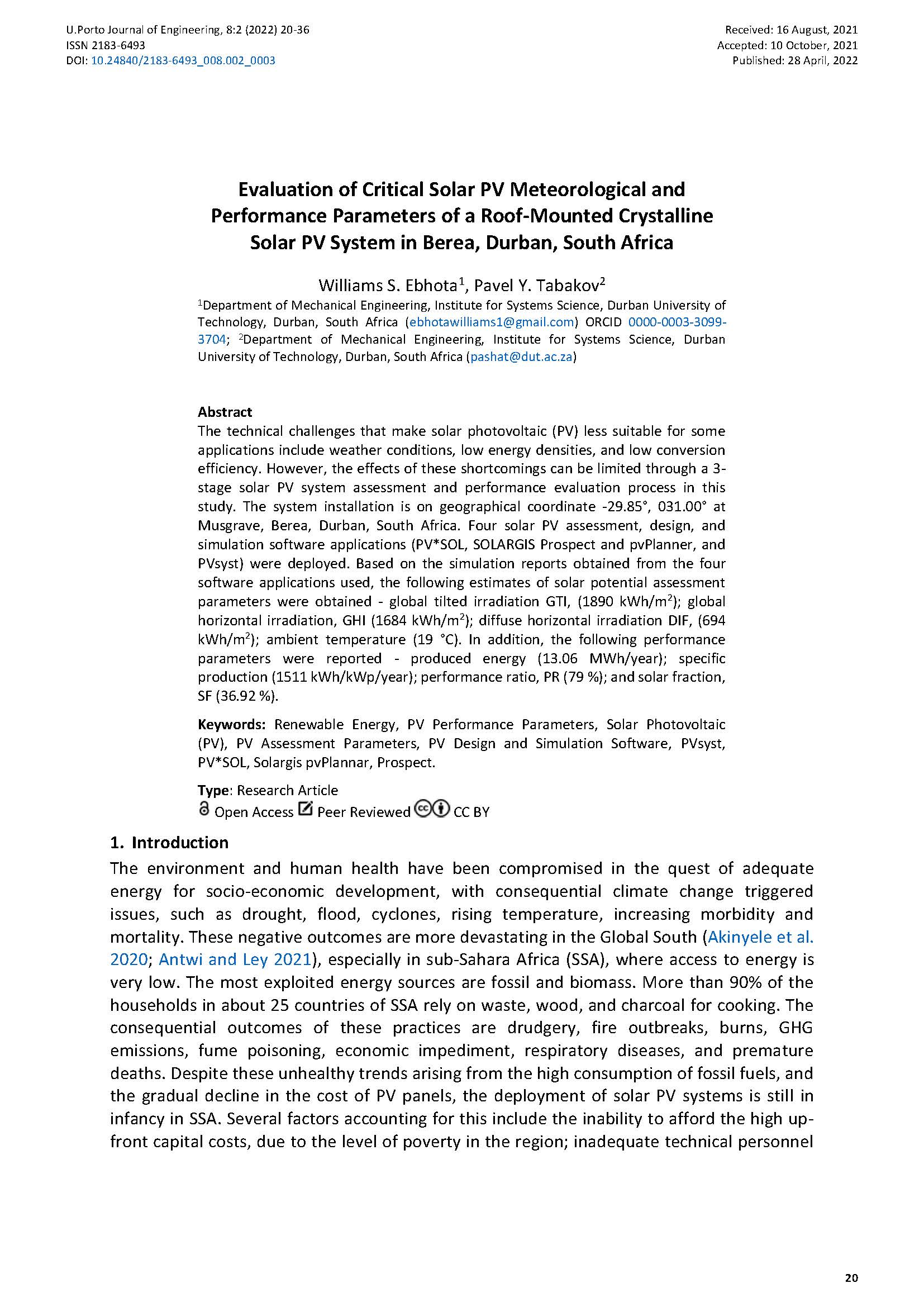Evaluation of Critical Solar PV Meteorological and Performance Parameters of a Roof-Mounted Crystalline Solar PV System in Berea, Durban, South Africa
Main Article Content
Abstract
The technical challenges that make solar photovoltaic (PV) less suitable for some applications include weather conditions, low energy densities, and low conversion efficiency. However, the effects of these shortcomings can be limited through a 3-stage solar PV system assessment and performance evaluation process in this study. The system installation is on geographical coordinate -29.85°, 031.00° at Musgrave, Berea, Durban, South Africa. Four solar PV assessment, design, and simulation software applications (PV*SOL, SOLARGIS Prospect and pvPlanner, and PVsyst) were deployed. Based on the simulation reports obtained from the four software applications used, the following estimates of solar potential assessment parameters were obtained - global tilted irradiation GTI, (1890 kWh/m2); global horizontal irradiation, GHI (1684 kWh/m2); diffuse horizontal irradiation DIF, (694 kWh/m2); ambient temperature (19 °C). In addition, the following performance parameters were reported - produced energy (13.06 MWh/year); specific production (1511 kWh/kWp/year); performance ratio, PR (79 %); and solar fraction, SF (36.92 %).
Downloads
Article Details

This work is licensed under a Creative Commons Attribution 4.0 International License.
Authors who publish with this journal agree to the following terms:
- Authors retain copyright and grant the journal right of first publication with the work simultaneously licensed under a Creative Commons Attribution License that allows others to share the work with an acknowledgement of the work's authorship and initial publication in this journal.
- Authors grant the journal the rights to provide the article in all forms and media so the article can be used on the latest technology even after publication and ensure its long-term preservation.
- Authors are able to enter into separate, additional contractual arrangements for the non-exclusive distribution of the journal's published version of the work (e.g., post it to an institutional repository or publish it in a book), with an acknowledgement of its initial publication in this journal.
- Authors are permitted and encouraged to post their work online (e.g., in institutional repositories or on their website) prior to and during the submission process, as it can lead to productive exchanges, as well as earlier and greater citation of published work (See The Effect of Open Access).

